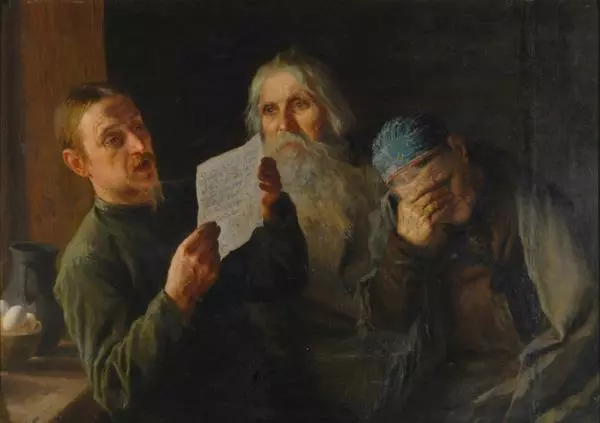Fedin and Zoshchenko, who was a member of the Serapion Brothers, became friends in the 1920s. And this friendship lasted throughout Fedin’s life. The Serapion Brothers was a group of young writers that was founded in Petrograd on 1 February 1921 in Petrograd. The name was borrowed from the German author E. T. A. Hoffmann, who wrote a series of novels featuring a literary circle of the same name. The young writers seized upon the idea of free creativity espoused by the main characters in the novels. This was in tune with the times and fully consonant with their moods. The Serapion Brothers association included the following writers: Lev Lunts, Nikolay Nikitin, Mikhail Slonimsky, Ilya Gruzdev, Konstantin Fedin, Vsevolod Ivanov, Mikhail Zoshchenko, Veniamin Kaverin, Elizaveta Polonskaya and Nikolay Tikhonov. This is roughly the order in which they were accepted into the group. From the very beginning, Zoshchenko stood out in the Serapion community for his unique literary gift and an unusually serious attitude to writing.
1 / 3
Letter to Konstantin Fedin
Время создания
3 December 1957
Размер
20,3x14,3 cm
20,3x14,3 cm
20,3x14,3 cm
Техника
paper, manuscript, ink, pencil, typewriting
Коллекция
1
Открыть в приложении#1
Mikhail Zoshchenko
Letter to Konstantin Fedin
#2
#5
…Zoshchenko came into literature, like no one else, with his own voice, his own hero and idea, stating confidently with each line: This is how one should write, and this is the only way I will write, not otherwise!
Konstantin Fedin
#3
Photo of Mikhail Zoshchenko with a dedication to Fedin
Zoshchenko started his literary career in 1922. Before that, he had served in the army during the First World War and later fought in the Civil War. He tried his hand at a number of different professions before turning to literature. Zoshchenko’s humorous stories quickly made him famous. His works enjoyed great popularity in the 1920s and 1930s. It was a huge literary event every time one of this books was published, and the content always provoked heated debate.
#4
But this all changed dramatically in 1946 following the publication of his story The Adventures of a Monkey (1945). The writer was hit by a flurry of criticism. His name was dragged through the mud and erased. From that moment on, Zoshchenko was likened to his heroes, accused of being a petty bourgeoisie, criticized for his descriptions of everyday life in his works, denounced for being vulgar and demonized for his lack of interest in politics. He was expelled from the Writers’ Union, stripped of his food ration card and completely excommunicated from literary work. Magazines and publishers broke off contracts, demanding the return of advances. The writer’s books were removed from libraries. Many former friends also distanced themselves from him. A difficult period in Zoshchenko’s life followed, full of uncertainty about the future. He often had no idea where his next pay check was coming from, how he was going to “earn his daily bread.” The writer lived on the edge of poverty.
The persecution of Zoshchenko started long before 1946. As early as 1944, the censors had prohibited Fedin from including an article about Zoshchenko in his book Gorky Among Us. It was only in 1957 that the article appeared in the memoir book Writer. Arts. Time. Zoshchenko was extremely moved by the gesture. In a letter to Fedin dated 3 December, Zoshchenko expressed his deep and sincere gratitude for the support and loyalty Fedin had demonstrated to their longstanding friendship.
The persecution of Zoshchenko started long before 1946. As early as 1944, the censors had prohibited Fedin from including an article about Zoshchenko in his book Gorky Among Us. It was only in 1957 that the article appeared in the memoir book Writer. Arts. Time. Zoshchenko was extremely moved by the gesture. In a letter to Fedin dated 3 December, Zoshchenko expressed his deep and sincere gratitude for the support and loyalty Fedin had demonstrated to their longstanding friendship.
#6
The State Fedin Museum
читать дальшескрыть
00:00
00:00
1x
Letter to Konstantin Fedin
Время создания
3 December 1957
Размер
20,3x14,3 cm
20,3x14,3 cm
20,3x14,3 cm
Техника
paper, manuscript, ink, pencil, typewriting
Коллекция
1
Открыть в приложении
Поделиться







